We're back after winter break and SUPER close to finishing our water unit! We started today with a recap of what we've figured out so far, remembering that we are trying to figure out how the purification plant actually adds things to water, all while removing things, too. We also remembered that the things in the water that we are able to test are dissolved, and we're trying to put all the pieces together about how something that is dissolved can be removed from the water. We rebuilt our models today in pairs, offering feedback to others in the form of questions.
We sat in a scientist circle to make sense of what new pairs of students decided could possibly be the means for how substances could be added and removed from our water supply knowing they are so small.
In our circle we figured out:
1. Adding stuff: We figured out there must be some sort of sensor that measures what's in the water and how much is needed. While people could do this, we think there's some sort of machine that adds just the right amount of whatever is needed.
2. Removing stuff: While microbes could eat dissolved stuff, microbes produce waste, and eventually they would die. This had us thinking that there would need to be a way to get rid of dead microbes and their waste, as these things are not in our drinking water.
3. This led us to thinking about other ways in which dissolved stuff could get removed from water. We know that traditional filters or nets have holes that are too big. We went back to our model tracker to see if there was anything we've figured out in the past that could help us determine how our water could be filtered...
AND THEN WE THOUGHT OF...
Groundwater! People who use groundwater have wells that naturally use the earth's materials (soil, sand, gravel and bedrock found in aquifers) to filter out anything dissolved in the water as it trickles to the base of the well. We're now thinking that maybe the purification plant adds stuff with machines and takes stuff out with earth materials!
We built a class consensus model for our thinking:
In our circle we figured out:
1. Adding stuff: We figured out there must be some sort of sensor that measures what's in the water and how much is needed. While people could do this, we think there's some sort of machine that adds just the right amount of whatever is needed.
2. Removing stuff: While microbes could eat dissolved stuff, microbes produce waste, and eventually they would die. This had us thinking that there would need to be a way to get rid of dead microbes and their waste, as these things are not in our drinking water.
3. This led us to thinking about other ways in which dissolved stuff could get removed from water. We know that traditional filters or nets have holes that are too big. We went back to our model tracker to see if there was anything we've figured out in the past that could help us determine how our water could be filtered...
AND THEN WE THOUGHT OF...
Groundwater! People who use groundwater have wells that naturally use the earth's materials (soil, sand, gravel and bedrock found in aquifers) to filter out anything dissolved in the water as it trickles to the base of the well. We're now thinking that maybe the purification plant adds stuff with machines and takes stuff out with earth materials!
We built a class consensus model for our thinking:
We then felt so confident about our sense-making that we wondered if it was really happening at the City of Chicago's Purification Plant. So an investigation idea was to go to the plant (which 5th graders can't because they're not old enough), but there's a video that exists of the processes that happen there!
Before the Faucet, After the Flush
Provides an overview of how tap water is purified, pumped and delivered to Chicago area residents and business; how the waste water and sewage is transported, treated and returned to our rivers and streams for reuse.
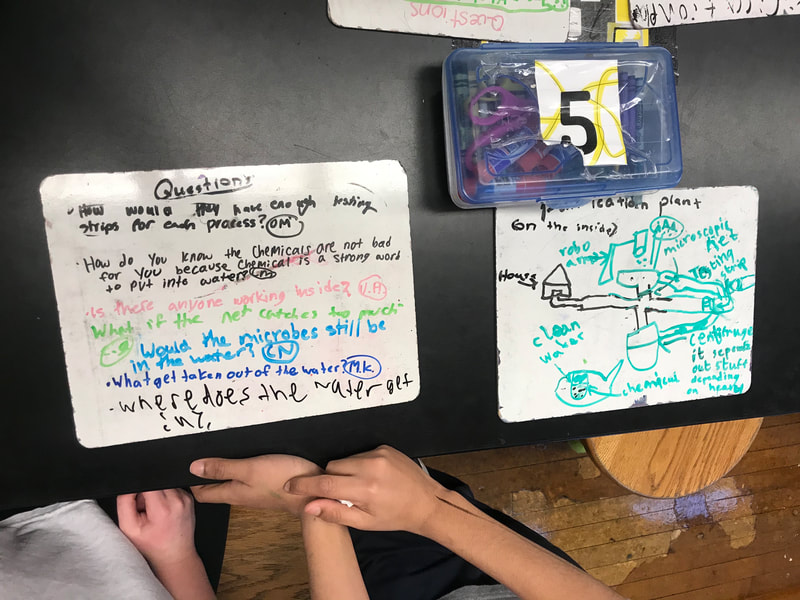
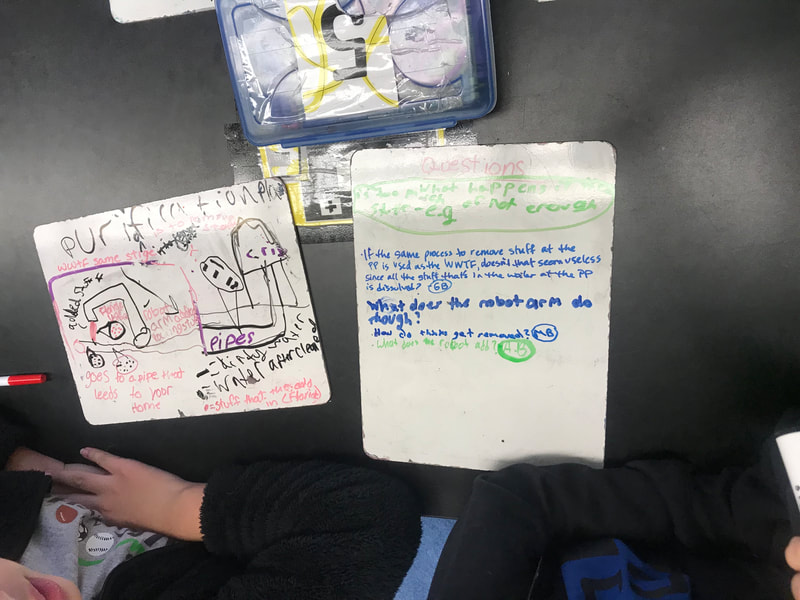
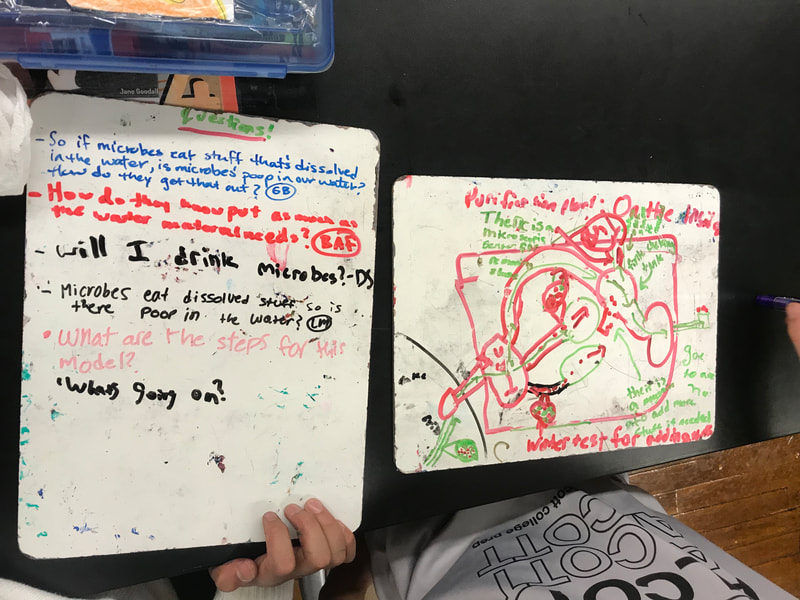
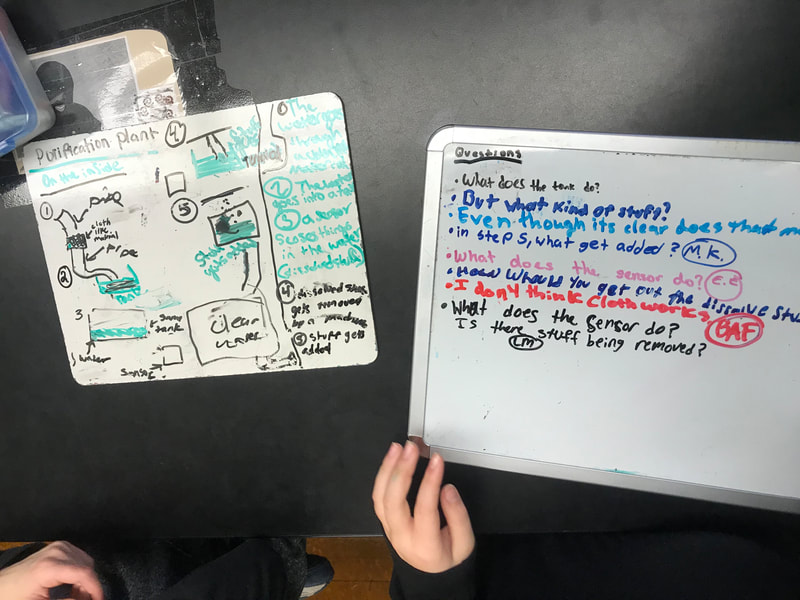
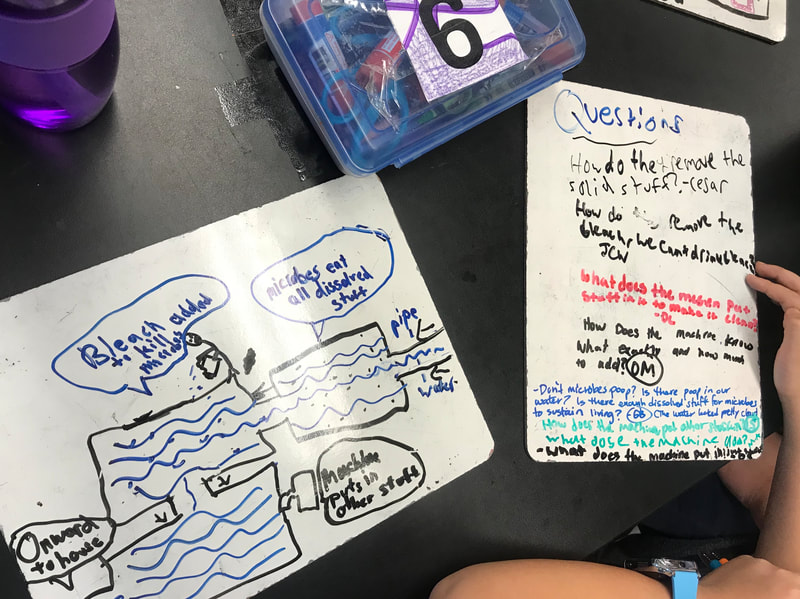
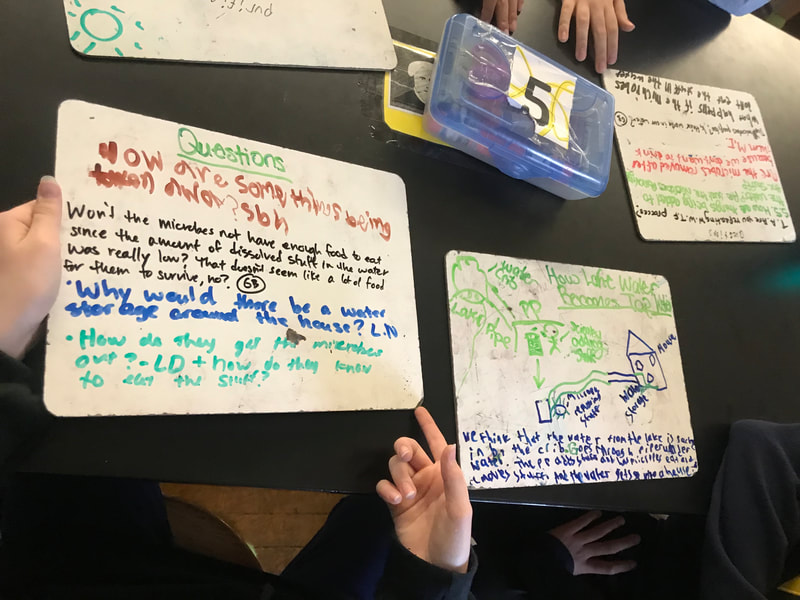
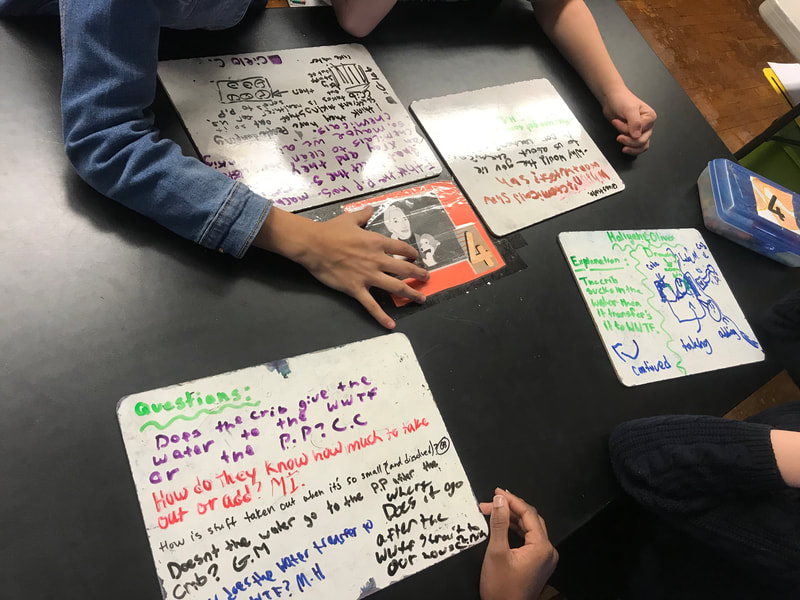
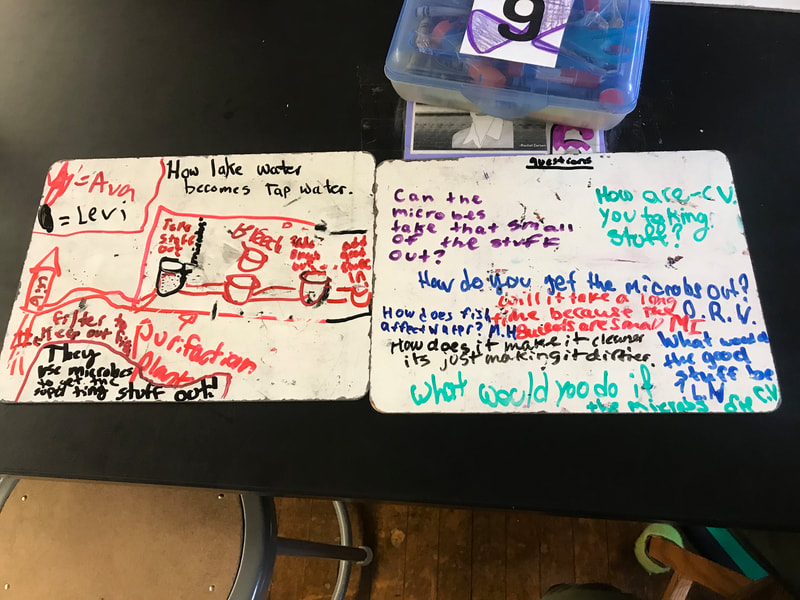
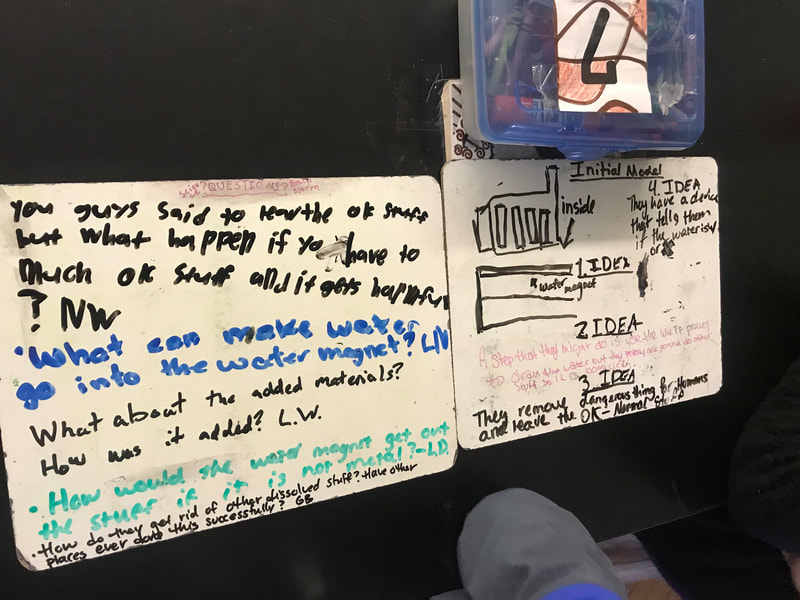
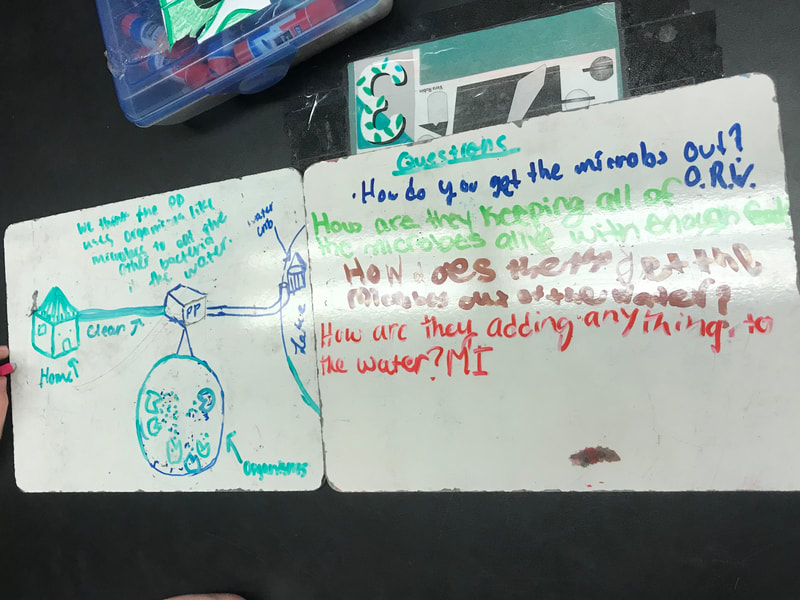
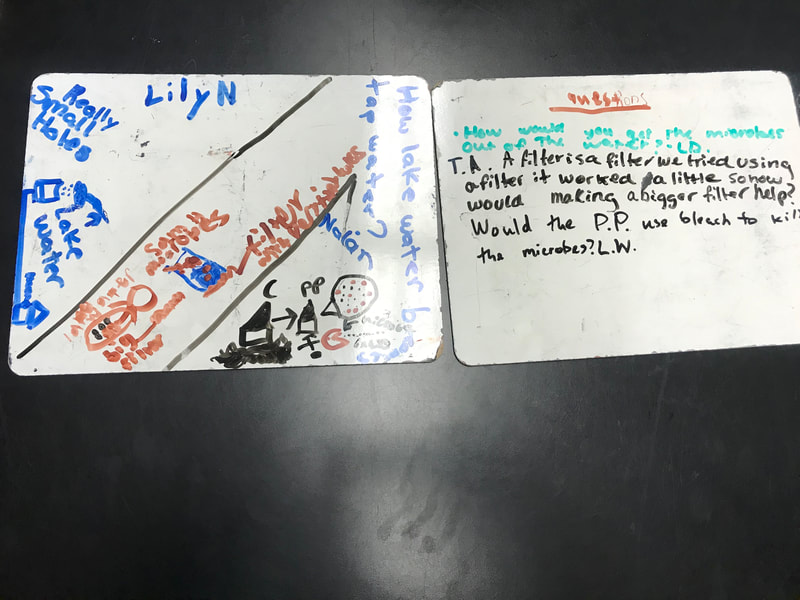
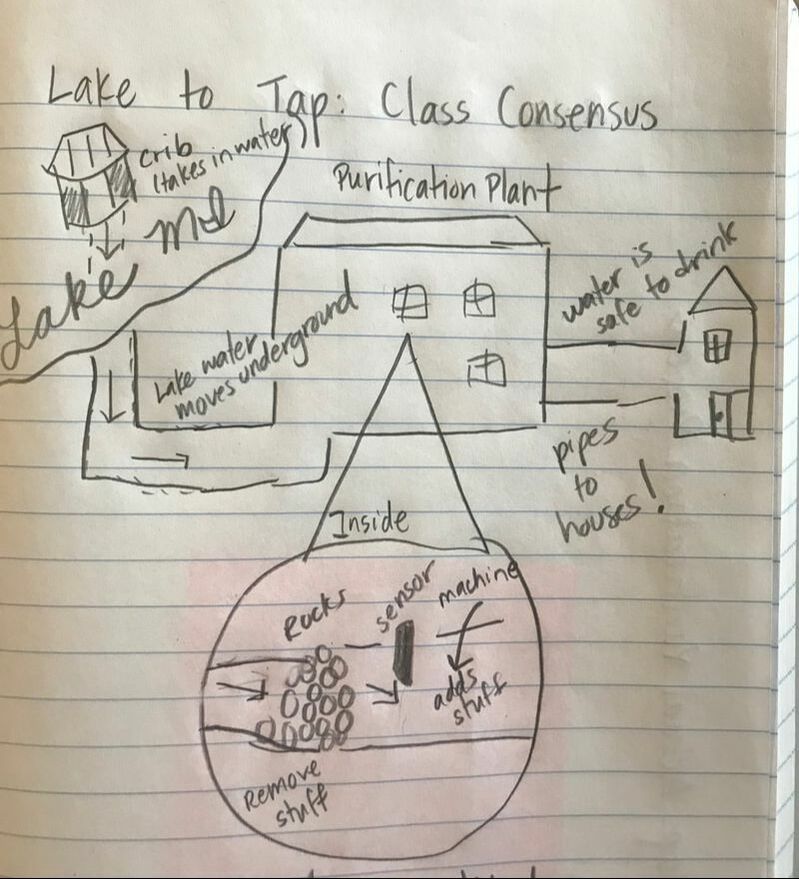
 RSS Feed
RSS Feed